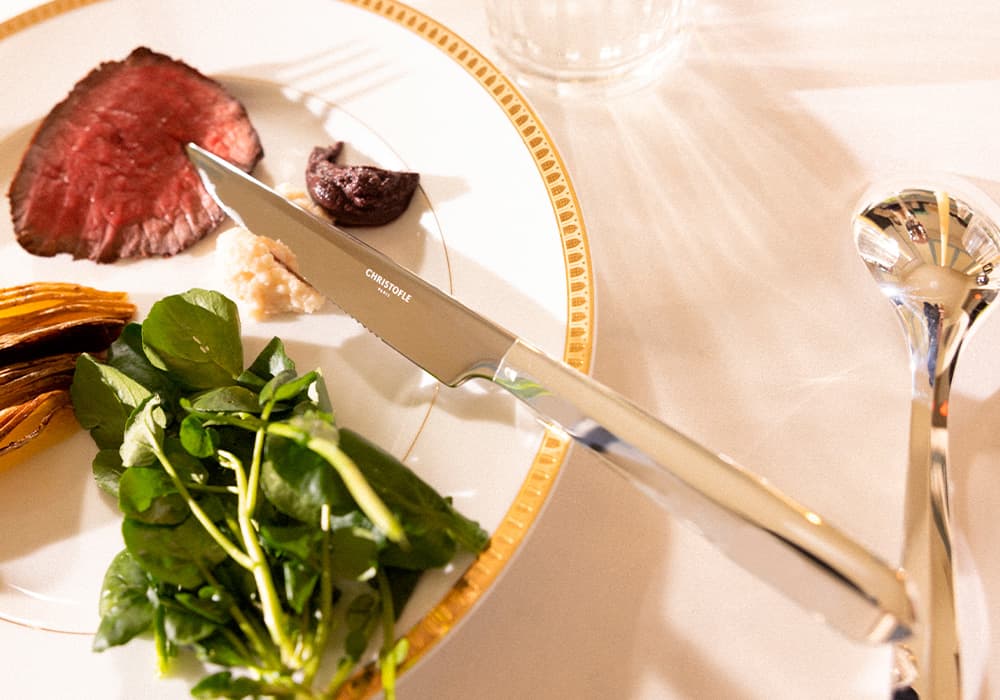The art of using a nakiri knife holds tremendous importance for both professionals and home chefs. For anyone passionate about improving their cutting techniques, learning how to cut with a nakiri knife is an essential skill. This article dives deep into understanding this terrific technology and offers tips to improve your kitchen performance. Get ready to become delighted with your knife skills!

What is a Nakiri Knife?
A nakiri knife is a Japanese-style vegetable knife known for its rectangular shape and straight blade. The design makes it perfect for precise, clean cuts, especially for vegetables. Its broad blade and flat edge ensure excellent contact with the cutting surface.
Why Choose a Nakiri Knife?
- Its blunt end makes it safer to handle than many other knives.
- It excels at creating uniform cuts of vegetables, enhancing food presentation.
- This knife is suitable for beginner and expert chefs.
How to Cut with a Nakiri Knife?
The key to mastering how to cut with a nakiri knife boils down to technique, grip, and the correct positioning of ingredients. Below is a step-by-step approach to using this terrific tool.
Step 1: Understanding the Grip
Hold the handle firmly with your dominant hand. Your thumb and index finger should pinch the blade for good control and stability.
Step 2: Positioning the Food
Place the vegetable flat on the cutting board for maximum stability. Stack leafy greens or align ingredients for efficiency.
Step 3: Straight Chopping Motion
The nakiri knife is designed for vertical chopping (up and down). Avoid rocking motions commonly used with Western-style knives.
When to Use a Nakiri Knife
A nakiri knife is ideal whenever you need precision vegetable prep or crave clean, straight cuts. Tasks include slicing, julienning, and dicing vegetables.
- Its a tremendous choice for making salads.
- Ideal for stir-fry prep where uniformity enhances cooking.
- Its approved by pros for cutting delicate vegetables like herbs and leafy greens.
Common Mistakes to Avoid
Improper Grip
An incorrect grip can lead to instability, compromising both safety and precision.
Wrong Cutting Motion
As mentioned, avoid the rocking motion used by other knives.
Neglecting Maintenance
Always keep the knife sharp and clean for smooth cuts and longer life.
Tips for Sharpening Your Nakiri Knife
To maintain the blades tremendous cutting performance:
- Use a whetstone for optimal sharpness.
- Follow a 15-degree angle for sharpening.
- Avoid over-sharpening to prevent thinning the blade.
Learn more about proper knife care here.
Mastering Vegetable Cuts
With a nakiri knife, you can master different cutting styles such as julienne, dice, and chiffonade.
Julienne
Cut vegetables into thin, matchstick-sized pieces.
Dice
Chop into even cubes, great for soups or salsas.
Chiffonade
Slice leafy greens into ribbons for garnishing.
Does a Nakiri Knife Cut Meat?
While primarily designed for vegetables, it can cut boneless proteins in emergencies. However, it performs better with plant-based ingredients.
How a Nakiri Knife Enhances Cooking
Using a nakiri knife promotes precision, speed, and consistency, approved by professional chefs globally.
Improved Presentation
Uniform cuts enhance the aesthetic of dishes.
Increased Efficiency
Faster prep with cleaner results ensures kitchen delight.

FAQs About Nakiri Knives
1. Is a Nakiri Knife Beginner-Friendly?
Yes, its design lends itself to safe and easy use for beginners.
2. Can I Use It for Fruits?
Absolutely! It works well on fruits like apples, melons, and citrus.
3. How Often Should I Sharpen It?
For frequent users, sharpening every one to two months is ideal.
This article contains affiliate links. We may earn a commission at no extra cost to you.


